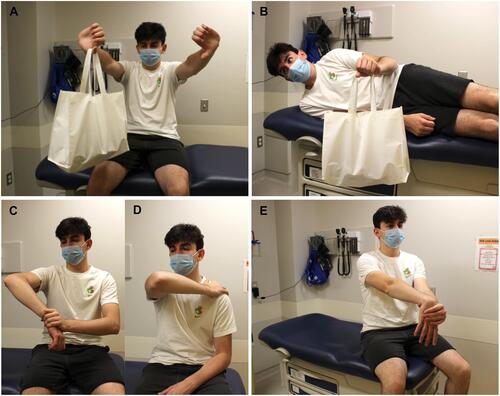Figures & data
Table 1 Nested Searches Used in Second PubMed Iteration
Table 2 Smartphone Apps and Their Studied Reliability and Validity in Measuring Joint ROMa
Table 3 Special Testing of the Shoulder via Telemedicine
Figure 1 Special testing of the upper limbs | (A) Jobe/Empty can test: patient holds weighted object, such as bag with canned goods, with their arms in 90º abduction and 40º of forward flexion with the thumbs pointing down. (B) Resisted external rotation: in the lateral decubitus position with the elbow flexed at 90º and tucked to the side, patient lifts weighted object in external rotation. Hawkins-Kennedy test: (C) with the shoulder and elbow abducted to 90º, patient pushes their wrist down while internally rotating that shoulder. (D) Alternatively, patient can touch the top of their unaffected shoulder with the hand of affected side while lifting that elbow. (E) Mill test: patient extends the affected arm in pronation with the wrist in flexion. Their opposite hand grips the other and pulls downward, providing resistance.

Table 4 Special Testing of the Elbow and Forearm via Telemedicine
Table 5 Special Testing of the Wrist and Hand via Telemedicine
